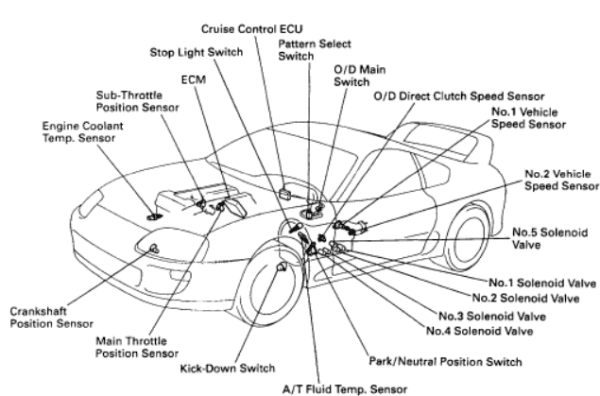Toyota supra 1997 code 33

Toyota supra 1997 code 33 – DTC 31 DTC 32 and DTC 34
For the 1997 Toyota Supra, DTC Code 33 related to the Speed Sensor Circuit typically refers to an issue with the vehicle’s speed sensor or its associated circuit. The vehicle speed sensor (VSS) provides crucial data to the engine control unit (ECU) to help manage fuel injection, transmission shifting, and other performance functions. When the ECU detects an issue in the speed sensor circuit, it triggers Code 33.
DTC Code 33: Speed Sensor Circuit Malfunction
Description:
This code indicates a problem with the speed sensor circuit, which could involve the sensor itself, the wiring, or the ECU. The speed sensor is responsible for measuring the vehicle’s speed and sending that data to the ECU. The ECU uses this information to control things like fuel delivery, transmission shift points (in automatic models), and ABS operation.
Possible Causes:
- Faulty Speed Sensor: The speed sensor itself may be malfunctioning, either due to internal failure or external damage.
- Damaged or Disconnected Wiring: Wires connecting the speed sensor to the ECU may be damaged, corroded, or disconnected, resulting in intermittent or no signal to the ECU.
- Faulty ECU: Though rare, a malfunctioning ECU may misinterpret or fail to receive the signal from the speed sensor.
- Dirty or Damaged Speed Sensor Gear: The gear that interacts with the speed sensor (often on the transmission) could be worn, dirty, or damaged, causing the sensor to receive incorrect or no input.
- Corrosion at Connectors: Corrosion in the electrical connectors can prevent the proper signal from reaching the ECU.
Symptoms:
- Speedometer not working or showing erratic readings.
- The Check Engine Light is illuminated.
- Automatic transmission may not shift properly or may shift harshly.
- Poor fuel economy due to improper speed data affecting the ECU’s fuel map.
- ABS system may not function correctly if the vehicle relies on the VSS data for ABS operation.
Solutions:
- Check the Speed Sensor:
- Visual Inspection: Examine the speed sensor for visible signs of damage. It is typically located on the transmission housing.
- Testing: Use a multimeter or an OBD-II scanner to test the speed sensor’s output. If the sensor is faulty, it needs to be replaced.
- Inspect Wiring and Connectors:
- Wiring Inspection: Check for any damaged, frayed, or corroded wires leading from the speed sensor to the ECU. Ensure that all connectors are secure and free of corrosion.
- Continuity Test: Perform a continuity test on the wires to ensure there are no breaks or shorts in the circuit.
- Check for Dirty or Damaged Speed Sensor Gear:
- Inspect the sensor gear on the transmission. If it’s damaged or excessively worn, it can cause incorrect readings. Clean the gear or replace it if necessary.
- Scan for Other Codes:
- Sometimes, a speed sensor issue can trigger other related codes, especially if the vehicle is experiencing multiple sensor failures. Use an OBD-II scanner to check for any additional codes.
- Replace the Speed Sensor:
- If testing confirms the speed sensor is malfunctioning, replace it with a new one. After replacement, clear the code using the OBD-II scanner.
Additional Information:
- The speed sensor in the 1997 Toyota Supra (especially the 2JZ-GTE version) is critical for performance and safety systems like ABS, traction control, and engine management.
- If the speedometer continues to function erratically or other symptoms persist after the sensor replacement, it may be necessary to inspect the ECU or have it reprogrammed or replaced.
A proper diagnostic scan and careful inspection of the sensor and wiring should help resolve DTC Code 33 related to the speed sensor circuit.



